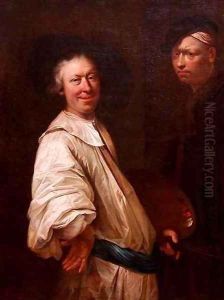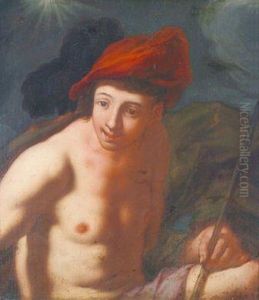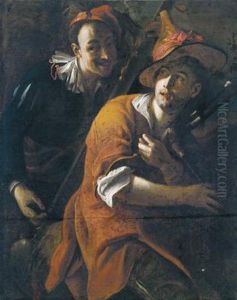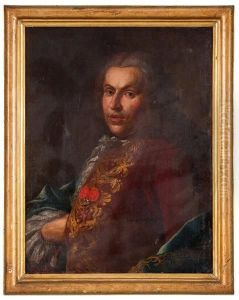Salomon Adler Paintings
Salomon Adler was a German painter born in 1630, whose life and work spanned the latter part of the 16th century and the early years of the 17th century. Not to be confused with later individuals bearing a similar name, Adler was primarily active during a period marked by significant changes in art, particularly with the ongoing transition from Mannerism to Baroque. While detailed records of his early life are scarce, it is known that he was part of the vibrant art scene that flourished in Germany during this time, contributing to the rich tapestry of European art history.
Adler's work is characterized by its incorporation of the emerging Baroque sensibilities, which included a greater emphasis on emotion, a dynamic use of light and shadow, and a focus on realism and expressiveness. His paintings often depicted religious themes, a common subject matter of the time, which allowed him to explore human emotion and divine interaction deeply. Despite the prominence of these themes, Adler also showed an interest in portraiture and occasionally ventured into mythological subjects, showcasing his versatility as an artist.
Throughout his career, Salomon Adler was influenced by the broader movements within European art, drawing inspiration from Italian and Dutch masters who were defining the Baroque style. His ability to blend these influences with his unique vision contributed to his reputation during his lifetime. However, like many artists of his era, Adler's work was gradually overshadowed by subsequent generations of artists, leading to a period of relative obscurity.
In recent years, there has been a renewed interest in the works of Salomon Adler, with art historians and critics reevaluating his contributions to the Baroque movement. His paintings are now appreciated for their technical skill, emotional depth, and the insight they offer into the religious and cultural milieu of 17th-century Germany. Despite the challenges in piecing together a comprehensive understanding of his life due to the limited historical records, Adler's legacy in the realm of German Baroque art is being gradually restored, highlighting his importance in the transition from the Mannerist to the Baroque style.



